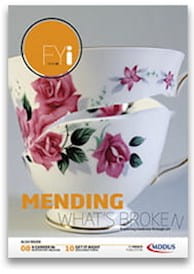
THE medical and scientific literature can be daunting — sometimes in its complexity but always in its scale. New articles are being published every day in a growing number of journals and any hope of keeping up might seem forlorn.
We need to read in order to stay abreast of new developments in our field, but we also need to read in order to learn how to write. Both are essential professional skills in modern medicine and to achieve these ends we need to find an efficient and economical way to read the literature. Fortunately, the scientific paper is designed to help us do just that, and we should make use of its structure with a layered approach to our reading.
Our first meeting with a paper will usually be on a results page of a search engine, where we will be given the title, authors, date of publication and journal. These pieces of information are all you need to decide whether you want to spend any more of your precious time on the paper. Is the title relevant? Are the authors recognised in your field? Is the paper recent and is the journal of sufficiently high impact to merit your attention?
If you decide, based on this assessment, that the paper merits further reading, you will, usually at the touch of a button, be able to obtain the abstract. This summary of the paper has been written specifically with you in mind — the busy reader. But I suggest you don’t read the whole abstract, just look at the last sentence. There you will usually find the main conclusion of the paper — the take-home message — and that combined with the title you have already read, should make it clear whether this paper deserves more work. If it does, then read the whole abstract and if your interest is still piqued, turn your attention to the main paper.
The paper itself is written in defined sections. These are usually introduction, methods, results and discussion. There will also be an acknowledgements section, a list of references and assorted tables and figures. Where do you start? Well, not at the beginning because a scientific paper is not a novel and is not necessarily designed to be read in a linear fashion from start to finish.
As you first approach the scientific literature it might seem that everything is interesting, well-executed, cogently argued and better than anything you could hope to produce. With time and the benefit of experience, scientific papers become less convincing.
As you develop your own critical faculties you will be harder to convince and more questioning of the conclusions of others.
At that point the most important part of any paper will be the results section. These are the only truly unique contribution the authors are making. The question they have set out to answer has probably been addressed by others, their methods may be well-known and their conclusions are only one interpretation. Their results, however, are unique, and this aspect of the paper will be the part where you will increasingly wish to focus. The written results section is, however, often one of the most tedious parts of a paper; much better to study the tables and figures where the results are presented in a more readily digestible format.
So, after you have read the title, the last sentence of the abstract and then the whole abstract, turn your attention to the figures and tables with their associated legends. This will quickly tell you the story of the results. If you are still interested you may then turn your attention to the introduction. If you are familiar with a topic it is unlikely that anything in this scene-setting section should be new to you, but it might be. Turn your attention next to the discussion and only if you are still interested look at the methods and written results sections.
Throughout this process you should be reading actively. This means on a practical level you should always read with a pen in your hand or at least with some way of making notes and recording any questions you might have about the paper. Those questions are important, for a scientist is a sceptic - someone who takes nothing at face value. And never forget, just because it is published does not mean it is necessarily true.
How we read and how much time we spend on a paper will depend on its level of interest for us. Some papers will be skimmed, others read in more detail, and yet others will be practically learned by rote. In every case, you should read the paper in layers, unwrapping each and only stopping when the paper has nothing more to offer. For a paper of little relevance this may be at the title; for one that is at the core of your interest this may be only after you have read every word.
Dr Allan Gaw is a writer and educator in Glasgow
This page was correct at the time of publication. Any guidance is intended as general guidance for members only. If you are a member and need specific advice relating to your own circumstances, please contact one of our advisers.
Read more from this issue of FYi

Save this article
Save this article to a list of favourite articles which members can access in their account.
Save to library